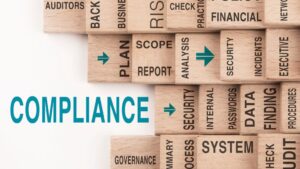Combating financial crime in trade requires a multifaceted approach that unites both public and private sectors. As trade continues to globalize, the avenues for illicit financial activities expand, posing a challenge to regulators, financial institutions, and trade entities. Effective measures involve the integration of advanced technologies, such as artificial intelligence and blockchain, to enhance transparency and traceability in trade transactions.
Moreover, consistent international cooperation, information sharing, and harmonized regulatory frameworks are essential in building a resilient trade ecosystem that thwarts financial criminals and safeguards global commerce.
Transferring value through legitimate trade transactions has become an increasingly attractive avenue for money launderers and terrorist financiers, as they can easily obscure their transactions in significant international trade volumes and escape detection.
The main methods by which such people transfer value through legitimate trade transactions are under-invoicing, over-invoicing, short or over-shipment, obfuscation of type of goods or services, etc.
Combating Financial Crime in Trade
Trade-Based Money Laundering and Terrorist Financing refers to disguising the proceeds of crime and moving the funds or value from one location to another through trade transactions to hide the origin of funds or finance terrorist activities.
History of customer due diligence or CDD, know your customer or KYC, and transaction monitoring can be linked with different significant financial frauds and other criminal activities or incidents that occurred through the financial institutions or using the financial system.
Different terrorist groups laundered money using the banking system, which caused the regulatory authorities to impose huge penalties on the banks. Fines and penalties resulted in reputational losses and financial losses, loss of customer base, etc.
Due to significant criminal activities incurred using the financial channel, the regulatory authorities focused on controlling the situation. They recommended to the institutions, through different means, to develop and implement the identification process of suspicious activities.
Financial institutions then started adopting the processes to identify the suspicious transactions initiated by their trade customers or incurred in their accounts. Trade-related AML/CTF regulations emphasized the importance of monitoring trade transactions.
Financial institutions and their processes have evolved, and banks are now required to monitor customers and their transactions as part of overall regulatory compliance. Financial institutions are still fined by the regulatory authorities when any breach of AML/CTF requirements is identified. It is proof that there is still a lot to be done in terms of transaction monitoring to avoid the risk of money laundering and terrorist financing activities.
The Assessment of Risk Profiles
Historically, the institutions faced challenges in identifying criminal activities, such as money laundering and terrorist financing, because of a lack of systems and processes that help detect suspicious activities on the customer’s end.
One of the trade compliance requirements includes adopting a risk-based approach while conducting KYC/CDD of trade customers. When onboarding a trade or export customer, the organization should obtain the relevant information about the customer’s trade-related activities and incorporate it into the Customer’s Risk Profile. Due weightage should be given to different risk factors.
Suppose the customer is not engaged in trade-related activities at the onboarding time. In that case, the relevant information shall be captured and part of the Customer’s Risk Profile when the customer enters the trade business.
The assessment for risk profiling may include but is not limited to the following:
The goods or services in which the customer usually trades and prices thereof where available
Customer’s key buyers and suppliers
Annual volume of trade transactions of a customer
Trade cycle of the customer
The countries of origin of goods in which the customer trades
The jurisdictions or countries of business
Modes of transportation for goods
Ports of loading or discharge
Usual mode of trade and terms of payments
Related business concerns, such as domestic (as well as international) and third parties such as shipping agents, insurance companies, inspection companies, etc.
Active membership of customer with the Chamber of Commerce or Trade Association
Persons authorized to sign on behalf of a customer
Legal structure of the customer
Ultimate beneficial owner of the customer or transactions along with their stakes in the trade transactions directly or indirectly
Conduct of customer’s personal PKR/FCY Account.
Monitoring is another trade compliance requirement. The lack of appropriate processes to monitor trade transactions caused an increase in the ML/TF risks and incidents.
Trade-related AML systems to perform transaction monitoring and define red flags for investigations are crucial to mitigate trade-related risk factors.
After the occurrence of money laundering incidents, the need to develop robust processes and controls, including the AML systems, was realized to help the business earn a good reputation in the eyes of customers and regulatory authorities.
As financial crime has become more complex and financial intelligence has become more recognized in combating money laundering and terrorism, institutions are developing and improving their internal compliance processes. This improvement ensures that a regular mechanism of performing risk-based trade transaction monitoring is implemented and maintained.
Regulators and institutions are aware that money laundering is more prominent in political and legal debates. Therefore regulatory authorities are putting in continuous efforts to support the institutions in strengthening the financial system.
Through their supervision and trade-related regulations, regulators ensure the adoption of international best practices and tools available to prevent money laundering and terrorist financing incidents arising from trade transactions, including export transactions.
Final Thoughts
In an era of booming international commerce, the obscure avenues of trade have unintentionally provided money launderers and terrorist financiers a playground to camouflage their illicit activities. Trade-Based Money Laundering and Terrorist Financing strategies, including deceptive invoicing and shipment practices, have been employed to mask the origins of nefarious funds. The intertwining history of customer due diligence, KYC protocols, and transaction monitoring signifies financial institutions’ constant battles against abuses of the system, with many banks facing hefty fines for oversight lapses.
Despite advancements in risk assessment and transaction monitoring, the ongoing penalization of financial institutions underscores the inherent challenges in rooting out sophisticated financial crime. As the evolution of money laundering strategies parallels advancements in financial intelligence, a synergized effort from regulators and institutions is imperative, emphasizing the adoption of best practices to fortify the global financial system against exploitation.





